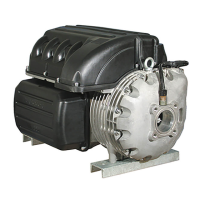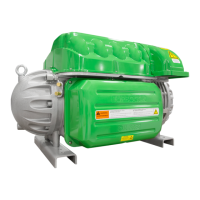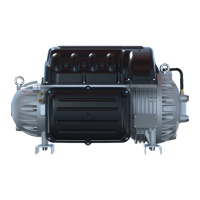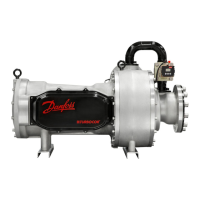95 of 132
M-SV-001-EN Rev.E
Troubleshooting
Table 18 - Compressor Fault
Types
Compressor Description
Inverter Temperature The measured Inverter temperature has exceeded the fault limit.
Discharge Temperature The measured discharge temperature has exceeded the fault limit.
Suction Pressure The measured suction pressure has exceeded the fault limit.
Discharge Pressure
The measured discharge pressure has exceeded the fault limit.
Instantaneous lock-out at fault level.
3-Phase Over-Current
The calculated 3 phase current has exceeded the fault limit.
Instantaneous lock-out at fault level.
Cavity Temperature The measured cavity temperature has exceeded the fault limit.
Leaving Fluid Temperature
The lowest acceptable measured leaving fluid temperature has been
exceeded.
Pressure Ratio
The calculated pressure ratio of discharge/suction has exceeded the fault
limit.
Generic Compressor Fault
If a motor fault type or a bearing fault type is present, then the generic
compressor fault is triggered.
This is not an actual fault, only an indication that a motor or bearing fault
has occurred.
Sensor Fault
If the following measured temperatures (in °C) or pressures in (kPa abs) are
surpassed, a sensor fault is triggered:
Inverter Temperature: >100 or < 0 °C
Cavity Temperature: >100 or < -20 °C
Suction Temperature: >100 or < -30 °C
Discharge Temperature: >110 or < -30 °C
Leaving Air/Water Temperature: >100 or < -20 °C
Suction Pressure: >1200 or < -30 kPa abs
Discharge Pressure: >3500 or < -30 kPa abs
SCR Temperature The measured SCR temperature has exceeded the fault limit.
Lock Out Fault
Lock-Out faults require power cycle to reset.
Instantaneous lock outs:
Discharge Pressure
3 Phase Over Current
If any (or a combination of) the faults listed below occurs more than 3
times within 30 minutes, a Lock-Out fault occurs:
Inverter Temperature
SCR Temperature
Motor High Current
Inverter Error
Rotor may be Locked
Back EMF is low
Winding Temperature The measured motor winding temperature has exceeded the fault limit.
Superheat The calculated Superheat Temperature has exceeded the Fault limit.
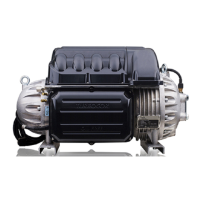
